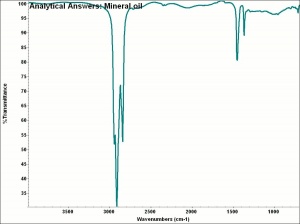Difference between revisions of "Mineral oil"
m (Text replace - "== Authority ==" to "== Sources Checked for Data in Record ==") |
m (Text replace - "\[http:\/\/cameo\.mfa\.org\/materials\/fullrecord\.asp\?name=([^\s]+)\s(.*)\]" to " $2") |
||
| Line 1: | Line 1: | ||
== Description == | == Description == | ||
| − | 1) A colorless, aliphatic hydrocarbon oil obtained from petroleum distilled at 330-360C. Mineral oil, or liquid petrolatum, is normally divided into two fractions: light mineral oil (density 0.83-0.88) and heavy mineral oil (density 0.86-0.91). Mineral oil is used as a lubricants for textile processing. It was also used in a much touted formulation ([ | + | 1) A colorless, aliphatic hydrocarbon oil obtained from petroleum distilled at 330-360C. Mineral oil, or liquid petrolatum, is normally divided into two fractions: light mineral oil (density 0.83-0.88) and heavy mineral oil (density 0.86-0.91). Mineral oil is used as a lubricants for textile processing. It was also used in a much touted formulation ( |
| + | [[Phoebus|Phoebus]]) for the removal of bloom on varnished oil paintings. This practice, however, is not recommended. Mineral oil is chemically inactive and is unlikely to damage aged | ||
| + | [[linseed%20oil|linseed oil]] films; however, once it is placed on a painting, the mineral oil will be virtually impossible to completely remove. | ||
| − | 2) The term 'mineral oil' was originally used as a synonym for [ | + | 2) The term 'mineral oil' was originally used as a synonym for |
| + | [[petroleum|petroleum]]. | ||
== Synonyms and Related Terms == | == Synonyms and Related Terms == | ||
Revision as of 13:40, 9 May 2016
Description
1) A colorless, aliphatic hydrocarbon oil obtained from petroleum distilled at 330-360C. Mineral oil, or liquid petrolatum, is normally divided into two fractions: light mineral oil (density 0.83-0.88) and heavy mineral oil (density 0.86-0.91). Mineral oil is used as a lubricants for textile processing. It was also used in a much touted formulation ( Phoebus) for the removal of bloom on varnished oil paintings. This practice, however, is not recommended. Mineral oil is chemically inactive and is unlikely to damage aged Linseed oil films; however, once it is placed on a painting, the mineral oil will be virtually impossible to completely remove.
2) The term 'mineral oil' was originally used as a synonym for Petroleum.
Synonyms and Related Terms
huile minérale (Fr.); aceite mineral (Esp.); olio minerale (It); liquid paraffin; liquid petrolatum; white mineral oil; white Russian oil; Nujol; paraffin oil; vaseline oil; Phoebus
Other Properties
Soluble in ether, chloroform, carbon disulfide, naphtha, benzene. Insoluble in water, cold ethanol or glycerol.
| CAS | 8012-95-1 |
|---|---|
| Density | 0.83-0.91 |
Hazards and Safety
May be harmful by ingestion or inhalation. Skin contact may cause irritation. Combustion products are carbon monoxide and carbon dioxide.
Flammable. Flash point = 135C (275F)
Mallinckrodt Baker: MSDS
Sources Checked for Data in Record
- R. J. Gettens, G.L. Stout, Painting Materials, A Short Encyclopaedia, Dover Publications, New York, 1966
- M. Doerner, The Materials of the Artist, Harcourt, Brace & Co., 1934
- Ralph Mayer, A Dictionary of Art Terms and Techniques, Harper and Row Publishers, New York, 1969 (also 1945 printing)
- Richard S. Lewis, Hawley's Condensed Chemical Dictionary, Van Nostrand Reinhold, New York, 10th ed., 1993
- Hermann Kuhn, Conservation and Restoration of Works of Art and Antiquities, Butterworths, London, 1986
- Art and Architecture Thesaurus Online, http://www.getty.edu/research/tools/vocabulary/aat/, J. Paul Getty Trust, Los Angeles, 2000
